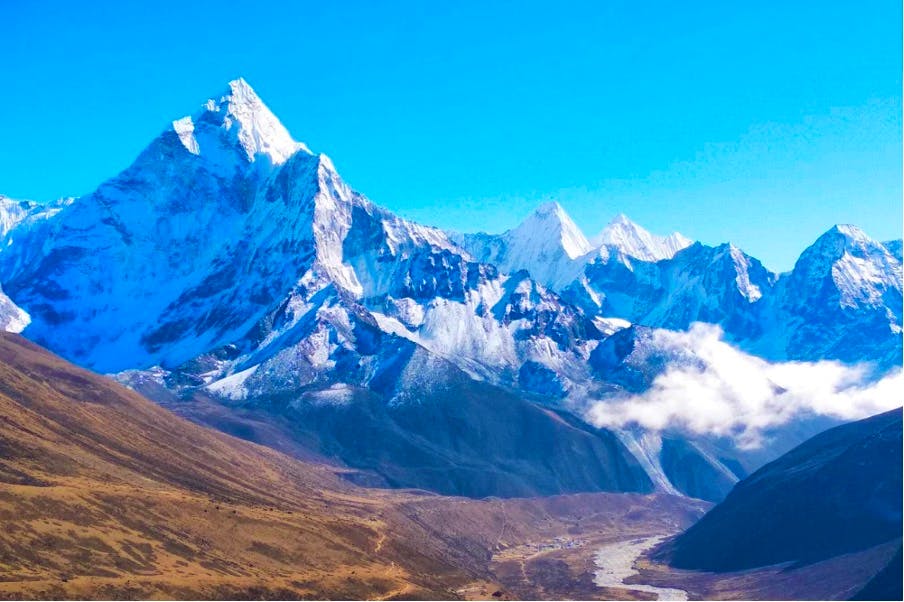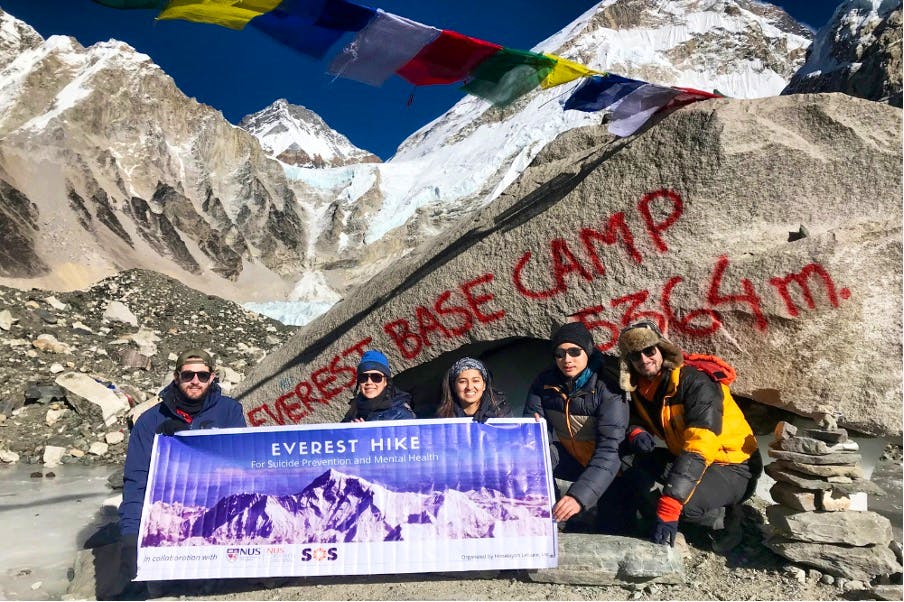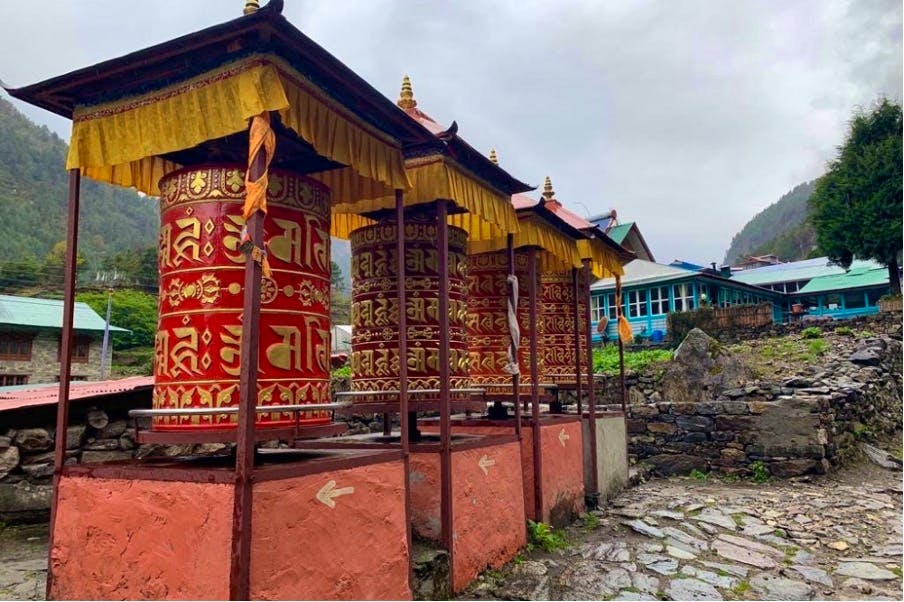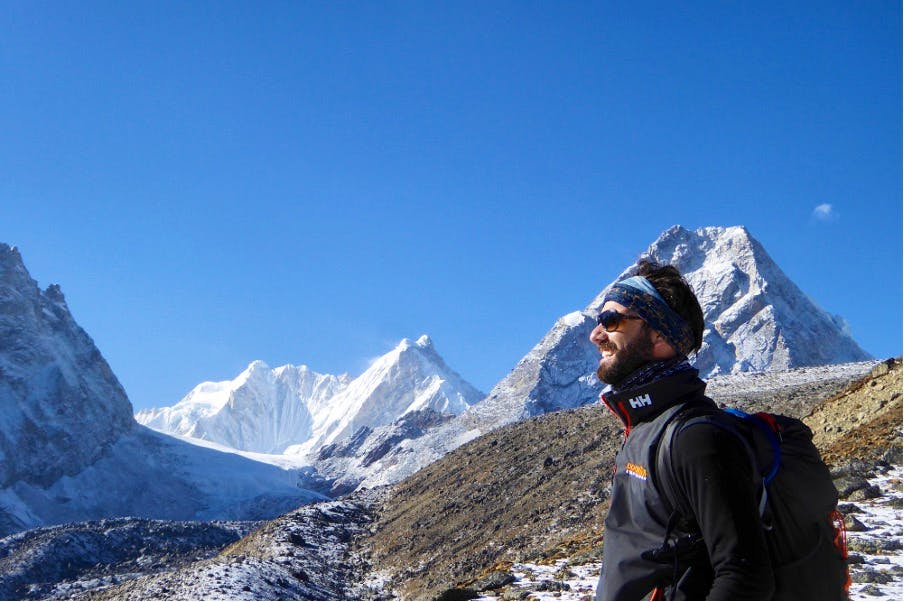Everest Base Camp Weather: What Every Trekker Needs To Know
Ah, the Everest Base Camp trek—a journey that captures the imagination of every adventure seeker. It's not just a trek; it's a rite of passage for many. But here's the catch: understanding the Everest Base Camp weather is crucial for a successful expedition.
If you're planning to conquer this iconic trek, pay close attention. The weather at Everest Base Camp can be as unpredictable as it is beautiful.
Let's dive in and prepare you for what lies ahead.

Best Seasons For Trekking
When it comes to trekking to Everest Base Camp, timing is everything. And we at Skyhook couldn't agree more. So, let's talk about the best time to trek Everest Base Camp: Spring and Autumn.
Spring (March, April, May)
Spring is a season of renewal, and the Everest region is no exception. During these months, the trails come alive with flowering rhododendrons, adding a splash of colour to your trek.
The weather is generally stable and dry, making it ideal for high-altitude hiking. However, the popularity of this season means that the trails will be bustling. You'll likely encounter many Mt Everest climbers and their support crews too.
But hey, the more, the merrier, right?
Autumn (September, October, November)
If you're a fan of clear skies and crisp air, Autumn is your season. The days might be colder, but that's a small price to pay for the jaw-dropping vistas and a perfect view from Everest Base Camp of the region's peaks.
An added bonus? You can explore some lesser-known EBC routes that offer equally stunning views without crowds.

EBC Temperature and What to Expect
In our experience, when trekking to Everest Base Camp, it's essential to know that the temperature isn't just a number—it's a factor that can make or break your journey.
Daytime Temperatures
During the daytime, temperatures can vary significantly depending on the season. In Spring, daytime temperatures can be around 7°C to 15°C.
Autumn offers a similar range, with daytime temperatures hovering between 4°C and 16°C. These temperatures are generally comfortable for trekking, but remember, the higher you go, the colder it gets.
Nighttime Temperatures
Once the sun sets, temperatures can plummet dramatically. In Spring, nighttime temperatures can drop to as low as -12°C, and in Autumn, you might experience temperatures down to -15°C.
Being prepared with the right clothing for these cold nights is crucial.
Temperature Variability as You Ascend
As you make your way up the EBC trail, the temperature decreases by about 6°C for every 1,000 meters you ascend.
So, if you start your trek in Lukla, which is at an altitude of 2,860 meters, and you're aiming for Everest Base Camp at 5,364 meters, you're looking at a significant temperature drop.

How to Prepare For Everest Weather: Our Top Tips
When trekking to Everest Base Camp, the weather can be as unpredictable as a roulette game. That's why preparation is not just a good idea—it's a necessity. Here are our Everest Base Camp trekking tips to ensure you're ready for whatever Everest throws your way:

Latest Deals
Layering is Key
Dressing in layers is not just a fashion statement; it's a survival strategy. Start with moisture-wicking base layers to keep sweat at bay. Add insulating layers like fleece jackets or down vests to trap heat.
Finally, top it off with a waterproof and windproof outer layer to shield you from rain, snow, and wind. This approach allows you to adjust to changing conditions easily, ensuring you're comfortable throughout your trek.
Here's a guide to clothing for the Everest base camp hike.
Weather-Resistant Gear
Remember to add appropriate gear to your Everest Base Camp packing list. Investing in high-quality, weather-resistant trekking boots and gear is non-negotiable. Look for boots with good ankle support, a sturdy sole, and waterproof material.
Your backpack should also be made of weather-resistant material and come with a waterproof cover.
Insider tip: Pay attention to quality; your gear is your lifeline in the unpredictable Everest weather.
Stay Informed
Staying aware of the current weather is essential, especially during your trek. National Geographic has created a low-bandwidth, near real-time site to display the latest weather data easily on a smartphone, even from Base Camp. This includes wind speed, temperature, humidity, and pressure.

Emergency Essentials
While our porters and guides have emergency kits with them, we recommend you also include your own. An emergency kit is not just a "nice-to-have"; it's a "must-have." Your kit should include:
A comprehensive first-aid kit.
A space blanket for warmth in extreme conditions.
Personal items, like lip balm, plasters, and more.
Knowing basic first aid skills and how to use an ice axe can be lifesaving in emergencies. Include anti-sickness medicine or painkillers such as ibuprofen or paracetamol to ease symptoms. Water purification tablets are also a good idea.
Mental Preparedness
Let's face it; a trek to Everest Base Camp is as much a mental challenge as a physical one. Prepare yourself mentally for the challenges ahead. A positive mindset can make a world of difference when you're battling unpredictable weather.
Visualisation techniques and mindfulness can help you stay focused and calm, enhancing your trekking experience and ensuring you have the best Everest Base Camp trek ever.

Conclusion
Understanding the Everest Base Camp weather is not just a part of your trek preparation; it's the cornerstone of a successful and memorable adventure.
From the gear you pack to the mental resilience you build, every aspect is influenced by the weather conditions you'll encounter.
With Skyhook by your side, you're not just prepared—you're empowered. So why wait? Book your adventure with Skyhook today and conquer Everest Base Camp like the seasoned trekker you're destined to be!
More EBC Articles
A guide to EBC trek difficulty
A guide to travelling in Nepal
Our favourite view of Everest from base camp
Popular EBC Trips
Find your next adventure
Why Skyhook?
Join over 27,000 Skyhook adventurers who've used our platform to book directly with our vetted local guides, at local prices (we never markup).
Expert Local Guides
Experienced local guides, handpicked by us.
Best Prices
Never pay a markup on the local guide's price.
Exclusive Club
Earn loyalty rewards every time you travel.
Great Social Vibes
Small group tours provide a richer experience.
Stellar Feedback
Over 2,800 reviews, average of 4.9/5 stars.












